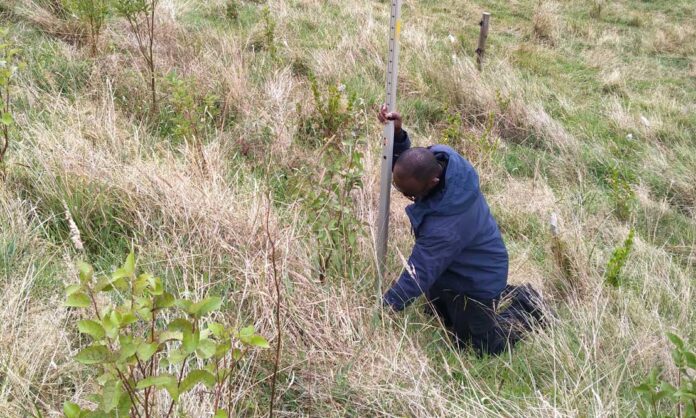Source: Massey University
Many farmers are considering establishing either shrub or tree species on this land. Production forestry using options such as pine can protect against erosion and provide income from carbon credits and log sales. When harvested, the economics of selling logs on remote sites is questionable, and their removal could potentially be associated with negative environmental impacts.
Native shrubs can be utilised for soil conservation, habitat enhancement for native species, riparian management, aesthetic value, and cultural reasons, but also have potential as a feed source for livestock – both the shrub itself and the potential herbage understory. Native shrubs can also be used as a source of carbon credit income.
Potential native shrub options include pāpāuma (Griselinia littoralis), māhoe (Melicytus ramiflorus) and taupata (Coprosma repens). Researchers at Massey University, led by School of Agriculture and Environment, Academic Dean Dr James Millner, as part of the Ministry of Business Innovation and Employment and Beef and Lamb NZ funded Hill Country Futures programme, are assessing the growth and herbage quality of leaves and edible stems of different native shrubs, and their potential greenhouse gas production when consumed by ruminants. Biomass (carbon) of individual shrubs and the proportion of edible components is also being measured.
Dr James Millner says, “This information is being used to develop a bio-economic model to estimate the impact of planting native shrubs on the least productive area of a farm, on the farm’s overall cash operating surplus.”
Future work led by Senior Lecturer Dr Sarah Pain will examine animal feed preferences. The bio-economic modelling is led by Associate Professor Dr Peter Tozer and PhD student James Wangui. The model was based on a 564-hectare East Coast region hill country sheep and beef farm, with a total of 10 per cent of the farm, the steepest land area, planted in native shrubs over a five-year period. This reduced the ewe flock by 290 ewes which in turn reduced wool, lamb, and cull ewe sales, and also incurred shrub planting expenses.
According to Dr Peter Tozer, the results indicated that from a purely economic perspective, taking even the steepest land out of production and planting with native shrubs was marginally infeasible at the current carbon price of $65 per NZ unit ($65 per tonne of carbon dioxide). However, the analysis did not take into account any reduction in erosion or the amenity value from the shrubs.
“A breakeven analysis of the carbon price showed that for the change to be at least as profitable as not planting native shrubs, the carbon price needed to increase to $71 per NZ unit. Given that the carbon price has increased by approximately 100 per cent over the past 12 months, it is reasonable to assume that the change would become feasible in the near future.
“Planting native shrubs on 10 per cent of the farm’s steep hills, at a 20 per cent annual planting rate, is certainly feasible given current carbon credit values, when considered with other tangible benefits including reduced workload and, in the longer term, reduced erosion and maintenance costs and greenhouse gas production,” Dr Tozer says.



